TSA allows you to carry on live and frozen lobsters, as well as items to keep your lobster cold, damp and alive
Published Aug 28, 2024 • 6 minute read
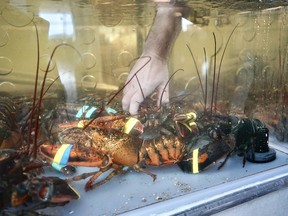
PORTLAND, Maine – Down the bright terminal hallway of the Portland International Jetport, past a gift shop, Starbucks and Burger King, you’ll find the Maine attraction: two acrylic tanks that split the bar and dining room at Linda Bean’s Maine Lobster Café.
The crustaceans resting at the bottom are dark brown, burnt orange or nearly black; lobsters don’t turn firetruck-red until they are cooked. During a recent visit, their robust claws were bound by thick yellow and blue rubber bands to protect them from pinching each other. Above them, a chalkboard sign read: “Lobsters packed for travel.”
Advertisement 2
THIS CONTENT IS RESERVED FOR SUBSCRIBERS ONLY
Subscribe now to read the latest news in your city and across Canada.
- Unlimited online access to articles from across Canada with one account.
- Get exclusive access to the Vancouver Sun ePaper, an electronic replica of the print edition that you can share, download and comment on.
- Enjoy insights and behind-the-scenes analysis from our award-winning journalists.
- Support local journalists and the next generation of journalists.
- Daily puzzles including the New York Times Crossword.
SUBSCRIBE TO UNLOCK MORE ARTICLES
Subscribe now to read the latest news in your city and across Canada.
- Unlimited online access to articles from across Canada with one account.
- Get exclusive access to the Vancouver Sun ePaper, an electronic replica of the print edition that you can share, download and comment on.
- Enjoy insights and behind-the-scenes analysis from our award-winning journalists.
- Support local journalists and the next generation of journalists.
- Daily puzzles including the New York Times Crossword.
REGISTER / SIGN IN TO UNLOCK MORE ARTICLES
Create an account or sign in to continue with your reading experience.
- Access articles from across Canada with one account.
- Share your thoughts and join the conversation in the comments.
- Enjoy additional articles per month.
- Get email updates from your favourite authors.
Sign In or Create an Account
or
Article content
The message ended in an asterisk: Customers must have room for a carry-on item on their flight to purchase.
At restaurants around the US, Maine lobster is a mark of quality. For travellers passing through the state’s largest airport, this 180-seat restaurant and lounge is one last chance to sample the local delicacy – there are lobster rolls, lobster Benedicts, a lobster bloody mary – or pack a live one to-go.
Live lobsters have been part of the menu since Linda Bean’s opened in the Portland airport in 2011. Selling them required obtaining special permits and licenses. But they weren’t the first to deal live lobsters from an airport; Maine’s Bangor International Airport used to sell them. Canada’s Halifax Stanfield International Airport still does.
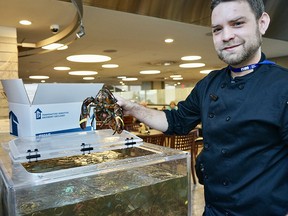
On the day of my visit, the arthropods – each 1¼ lbs. – were on sale for $46.99, plus a $12.99 packing fee per to-go cooler (you can store up to seven inside each).
Travellers passing through the Portland airport can pick out the lobsters they’d like. Staff pluck them out of the tank barehanded and secure them in a foam cooler chilled with ice packs. Coolers go in a cardboard box that gets taped up for transport. Travellers can then stash their lobster box in the overhead bin or below their seat, like any other personal item.
By signing up you consent to receive the above newsletter from Postmedia Network Inc.
Article content
Advertisement 3
Article content
Linda Bean’s is part of a lobster empire built by Linda Lorraine Bean, the granddaughter of another L.L. Bean, Leon Leonwood, the founder of the Maine-based retail behemoth. Bean died in March, but her namesake business lives on. In the summer, when visitors flock to Maine for craggy beaches, cooler weather and, well, lobster, the airport vendor sells up to three live lobsters a day.
“We’re ordering about two dozen a week,” said Mike Valeri, a sous chef for HMSHost, the airport food-service company that handles the day-to-day operations at the Portland airport.
The number goes up when the airport is busier. But in the offseason, “it drops off quite a bit,” Valeri said, with maybe one sale a week. The lion’s share of those buying are “mostly tourists for sure,” said Mary Gowan, who’s been a server at Linda Bean’s for six years. Occasionally the restaurant gets business travellers. Pilots are repeat customers.
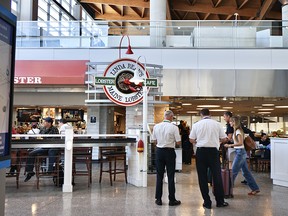
“[They’ll say] ‘it’s my anniversary, I want a couple lobsters for tonight,’” Gowan said. “I’ve had a lot of people do that.”
About a month ago, a customer called ahead to order live lobsters to-go, so they’d be quicker to pick up for their flight. The most lobsters Gowan can remember someone buying at once was a dozen, a more than $500 purchase.
Advertisement 4
Article content
“This is Maine,” she said. “They want the fresh stuff.”
From the ocean to the airport
Theoretically, lobsters could survive in the tank for three weeks, Valeri said. But it’s better to eat them as soon as possible.
“The longer they’re in there,” Valeri said, “the more there’s the chance that they’ll suffer or their health will go down or they’ll get beat up in any number of ways.”
The Portland airport restaurant gets a fresh delivery every Friday from Rockland-based distributor Bean Maine Lobster, Inc., a company Linda Bean sold to its employees in 2016. They travel from wharves in Port Clyde and Vinalhaven to an HMSHost warehouse, then to the airport where they must pass through security.
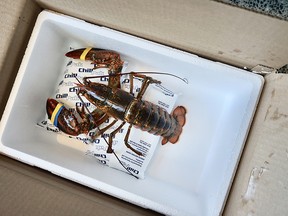
In 2014, the Food and Drug Administration cited Linda Bean’s processing operation for “significant” violations in the way it processed seafood; Bean called the claims “reasonable” at the time, and said she was addressing the issues. Bean also helped get Maine’s lobster industry certified as sustainable by the Marine Stewardship Council; the certification was later pulled in 2022 due to fishing’s impact on North Atlantic right whales.
Advertisement 5
Article content
But if you wanted to BYOL to the airport, you’d have no problem getting past Transportation Security Administration checkpoints.
“If they’re alive, we recommend you put them in a cooler,” said TSA spokesperson Lisa Farbstein.
TSA allows you to carry on live and frozen lobsters, as well as items to keep your lobster cold, damp and alive, like ice or completely frozen ice packs (a melted, gooey ice pack will not fly if it exceeds TSA’s rules on liquid limits).
“You can also pack frozen perishables in your carry on or check bags in dry ice,” Farbstein added. Note that the Federal Aviation Administration has a 5.5 pound limit for dry ice per passenger. Plus, it has to be clearly marked, properly packaged and vented, and approved by your airline.
Valeri said live lobsters should withstand 24 hours of travel, but if you arrive at your final destination and discover it has died, Linda Bean’s will ship you another one free.
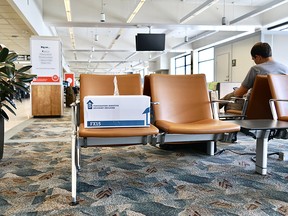
How do you know which one to choose? Gowan says most people just ask her to choose for them. But Valeri said you should look for a lobster that has a lot of fight in him; you want vivacious, not sickly. He stuck his hand into the tank and a radiant pumpkin-hued specimen reared up on its hind legs to pinch the intruder.
Advertisement 6
Article content
“Look how alert he is,” Valeri said. “He is so active that you just know he’s healthy.”
If your lobster is wriggling around too much to carry or cook, Valeri demonstrated a trick. “You start stroking it here down the lateral line,” he said, dragging his middle finger up the lobster’s back like a little massage. “If you do this for a few minutes, it’ll kind of calm down … and you can manipulate it in any way you want.”
“You pet the lobster?” I asked.
“You pet the lobster,” Valeri said.
As he brushed its speckled shell, the lobster seemed to relax. It dropped its claws from a defensive ready position to a droopy flop. And then it was into the cooler.
Where else to buy local
Like everything you buy at the airport, live lobsters are more expensive than they are in town. With the tax, packaging fee and tip, mine came out to more than $70. At Harbor Fish, a beloved wharf-side seafood market that’s served downtown Portland since the 1800s, the same size lobsters go for $22.99.
Markets like Harbor Fish will pack your seafood purchase for travel. You could also pack them yourself, making sure to keep your lobster cold and damp; some people just use ice or ice packs, and some throw in wet seaweed.
Advertisement 7
Article content
Customers on a Lucky Catch cruise – a $50 intro to lobster fishing out in Portland’s Casco Bay – can buy live lobster at the end of the excursion for about $12 apiece.
Brian Rapp, who captains lobster excursions for Lucky Catch Cruises, said as long as their tank looks clean and the lobsters appear healthy, you’re golden. Karen Landon, a lifelong Mainer who works on Portland’s St. Croix passenger ferry, said the airport lobster was “probably fine,” but people would have a better experience going into town to buy them from a local purveyor.
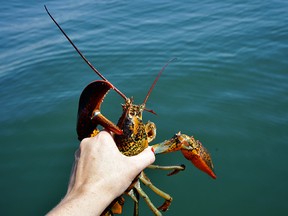
Although I didn’t have a flight to catch on the day I visited Linda Bean’s, I wanted to try handling a live lobster. But on the way back from the airport, dread set in as I reckoned with the fate of the creature inside the box.
Valeri had persuaded me it was noble to kill your own food, and that the lobster’s relatively quick death was preferable to the way factory farm animals go out.
“The difference is that we have to sit there and witness and make a judgment over whether or not our eating of this animal was worth the discomfort,” he said.
All I had to do was boil the lobster for nine minutes. Or, Valeri said, some people stab it first, then cook it.
But as the steam rose from my large stock pot, I made beady little eye contact with my airport catch. Huge mistake. I ran down to the nearest dock and threw $70 back into the sea.
Article content
.png)
 3 weeks ago
14
3 weeks ago
14





























 Bengali (BD) ·
Bengali (BD) ·  English (US) ·
English (US) ·